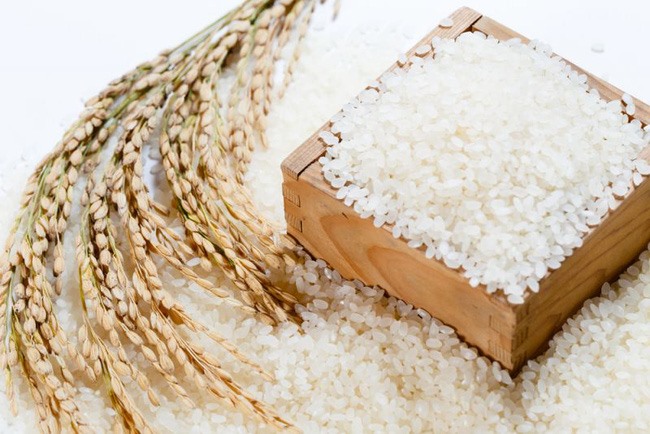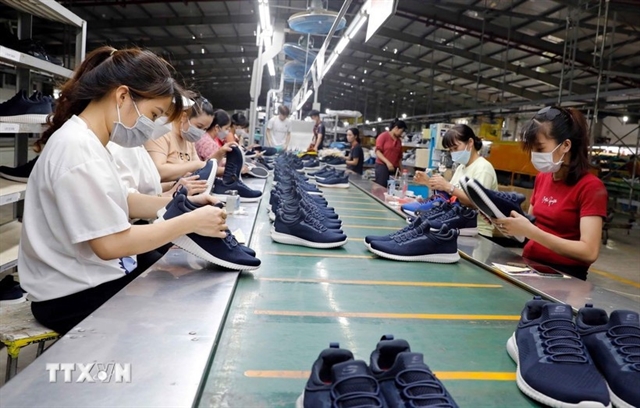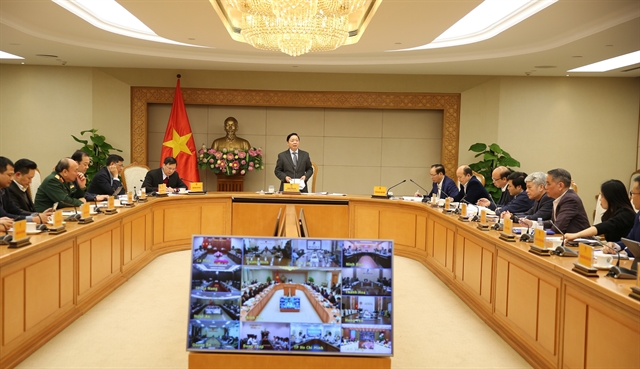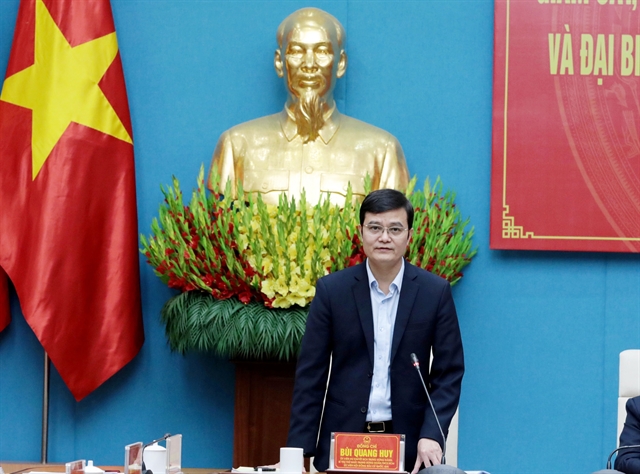 Economy
Economy

The prices of Việt Nam’s sticky rice are facing a downward trend due to its over-supply and dependence on a single large market, according to the Department of Farm Produce Processing and Market Development under the Ministry of Agriculture and Rural Development (MARD).
 |
| In order to improve the competitiveness of the rice industry, the State should establish better forecasts of demand for importing countries so that rice growers can make adjustments before planting. — Photo cafef.vn |
HÀ NỘI — The prices of Việt Nam’s sticky rice are facing a downward trend due to its over-supply and dependence on a single large market, according to the Department of Farm Produce Processing and Market Development under the Ministry of Agriculture and Rural Development (MARD).
Although it is now the beginning of the harvest of the summer-autumn crop, the sticky rice farmers are quite passive because they have few orders and few prospective buyers.
The statistics of Việt Nam Food Association (VFA) showed that, in 2017, Việt Nam exported 1.4 million tonnes of sticky rice, mainly to China.
Last year, as Việt Nam was expanding sticky rice production, China also quickly increased sticky rice cultivation. The current inventory of Chinese enterprises is quite large; therefore, promoting the export of sticky rice to China’s market in the near future is impossible, a sticky rice exporter to China revealed.
Due to the declining demand for sticky rice, its price declined sharply from US$530-540 per tonne in January-February to $460-470 at the moment. The domestic sticky rice price also fell sharply compared to other types of rice.
In contrast, the consumption of fresh rice IR50404 in the last winter-spring crop in the Mekong Delta has been quite "smooth". Domestic supply is not sufficient to meet all export contracts.
Therefore, prices of IR50404 rice in this region have continuously risen, setting the highest record in recent years. In some periods, the price of fresh rice IR50404 in the field was purchased by traders at a price of nearly VNĐ6,000 per kg, up VNĐ1,000 per kg compared with the peak price of 2017. The export price of this type of rice also rose significantly, higher than the price for rice from Thailand, India and Pakistan.
Looking at the contrast between the two types of rice, it is clear that the current crop structure in the country’s largest granary is not yet flexible enough to quickly adapt to meet market demands.
Enhance the competitiveness of enterprises
Đặng Thị Liên, director of Long An Foodstuffs Company Limited, said that the problem of sticky rice cultivation has been discussed already. In the recent winter-spring crop, as her firm realised it was heavily dependent on the Chinese market, it called for farmers to shift their sticky rice cultivation to high quality rice variety Đài Thơm 8 and agreed to collect all the output. However, farmers wouldn’t follow through, believing that the sticky rice market will recover soon.
According to Liên, warning enterprises is not enough; persuading growers to switch requires the participation of State management agencies as well as support from the press.
In order to avoid the oversupply of sticky rice and the undersupply of other types, MARD should coordinate with the Ministry of Industry and Trade (MoIT) and the VFA to study the import market and the demand for each type of rice. Then they can provided information to farmers, enterprises and localities to make adjustments before the planting season, she suggested.
An expert in agriculture, Võ Tòng Xuân, said market demand varies from year to year. This year, Indonesia and the Philippines are increasing imports, but it’s not certain that next year they will continue to import. Indonesia, for example, has not been importing rice for the past few years, but suddenly announced its purchase of 500,000 tonnes in early 2018.
Therefore, the Việt Nam Trade Commission in the countries should collect and supply information on the market demand of the host country to the MARD and MoIT for synthesis. From there, it is possible to analyse market demand.
In addition to providing market forecast information, some enterprises said that in order to improve the competitiveness of the rice industry, the State should have appropriate mechanisms and policies for businesses and farmers to actively approach the source of raw materials for export. — VNS




